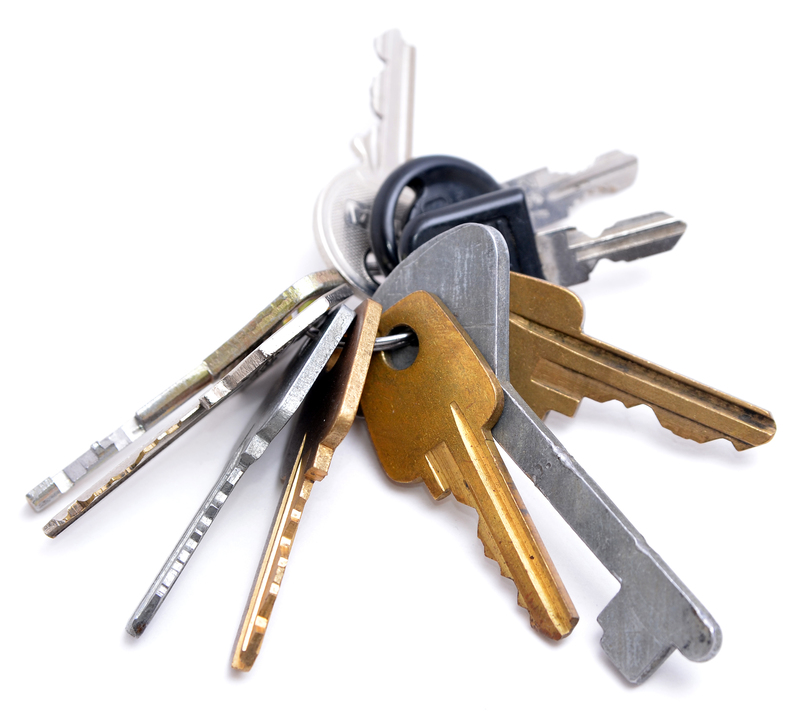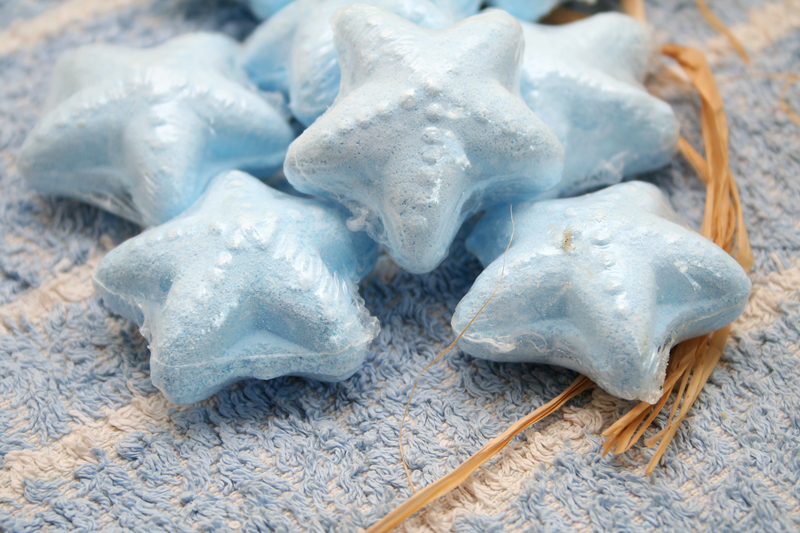Maintaining a Bathroom Free of Mold: What You Need to Know
Posted on 30/06/2025
Maintaining a Bathroom Free of Mold: What You Need to Know
Mold in the bathroom is a common and frustrating problem for many homeowners. Not only is it unsightly, but it can also have serious health implications and negatively impact the value of your property. Ensuring a mold-free bathroom takes dedication, routine maintenance, and a sound understanding of prevention techniques. In this comprehensive article, we will explore how to keep your bathroom mold-free, the causes of mold growth, prevention strategies, and effective cleaning methods.
Why Is Mold Common in Bathrooms?
Mold thrives in environments that are moist, warm, and poorly ventilated—three conditions often present in a typical bathroom. Activities like showering, bathing, and even handwashing generate moisture, and if this moisture is not properly managed, it can lead to mold infestation. Mold spores are naturally present indoors and outdoors, but they flourish rapidly when they land on damp surfaces. Understanding the root causes is essential for maintaining a bathroom free of mold.
Common Causes of Bathroom Mold
- Poor Ventilation: Steam and humidity linger when airflow is inadequate.
- Leaky Fixtures: Dripping pipes, faucets, or showerheads contribute to persistent dampness.
- Porous Building Materials: Grout, drywall, and wooden cabinets can trap moisture, fostering mold growth.
- Standing Water: Puddles or water left on the floor or countertops create prime conditions for mold development.
- Neglected Cleaning: Infrequent cleaning allows biofilm and grime to accumulate, which feeds mold colonies.

The Health Risks of Bathroom Mold
Failing to keep your bathroom mold-free can have significant health consequences. Mold produces allergens, irritants, and in some species, mycotoxins—all of which can impact your well-being.
- Allergic Reactions: Sneezing, watery eyes, and skin rashes are common symptoms in sensitive individuals.
- Asthma Attacks: People with asthma can experience increased episodes when exposed to mold spores.
- Respiratory Issues: Prolonged exposure may lead to coughs, wheezing, and throat irritation.
- Weakened Immune Systems: Certain groups, such as young children, the elderly, and immunocompromised people, are at higher risk of severe reactions.
Maintaining a mold-free bathroom is, therefore, essential for safeguarding the health of everyone in your household.
How to Prevent Mold Growth in Your Bathroom
Proactive steps are the cornerstone of bathroom mold prevention. Here is a comprehensive guide on how to keep your bathroom free from mold:
Improve Ventilation
Proper airflow is the enemy of mold. Consider these strategies:
- Install an Exhaust Fan: Use a high-quality bathroom exhaust fan and run it during and after showers or baths to expel humid air.
- Open Windows: If you have bathroom windows, open them regularly to promote fresh air circulation.
- Leave Doors Open: After use, prop the bathroom door open to allow moisture to dissipate throughout the home.
Fix Leaks and Drips Immediately
Water leaks are one of the leading causes of mold growth. Inspect your bathroom regularly for:
- Dripping faucets
- Leaking showerheads or pipes
- Broken or faulty toilet seals
Prompt repairs will help keep surfaces dry and mold-free.
Use Mold-Resistant Materials
When renovating or updating your bathroom, opt for mold-resistant paints and materials:
- Waterproof Paint: Specially formulated for high-humidity environments.
- Mold-Resistant Drywall: Greenboard or cement board is an excellent replacement for standard drywall in bathrooms.
- Silicone Caulk: More moisture-resistant than traditional alternatives for sealing around tubs and sinks.
Keep Surfaces Dry
After each use, take a few minutes to dry wet surfaces. This includes:
- Wiping down shower walls, doors, and floors
- Mopping up standing water on bathroom floors
- Removing wet towels and bathmats to dry outside the bathroom
Consistent drying disrupts the conditions mold needs to flourish.
Regular Cleaning Is Essential
Cleaning your bathroom regularly is crucial for preventing biofilm and soap scum, both of which provide a food source for mold.
- Shower Stalls and Bathtubs: Use a bathroom cleaner and scrub all surfaces weekly.
- Sink and Counters: Wipe down with disinfectant after use.
- Grout and Caulking: Clean with an old toothbrush and a bleach solution to kill mold spores.
- Toilets: Use a toilet-specific cleaner to prevent water line staining and potential mold.
More frequent cleaning may be needed for especially damp or high-traffic bathrooms.
Control Humidity Levels
Humidity above 60% creates a breeding ground for mold. To keep your humidity in check:
- Use a hygrometer to measure bathroom humidity levels.
- Run a dehumidifier if your bathroom remains damp or if you live in a humid region.
- Consider moisture-absorbing products like silica gel packs or DampRid in cabinets and closets.
Declutter the Bathroom
Excess items, especially those made from porous materials, can trap moisture and encourage mold growth. Keep only necessary toiletries and products in your bathroom. Store seldom-used items elsewhere, and keep surfaces as clear as possible.
Cleaning and Removing Mold From Bathroom Surfaces
Despite your best efforts, you may occasionally find some mold in your bathroom. If that happens, immediate action is necessary to remove mold from bathroom surfaces and prevent it from returning.
How to Clean Bathroom Mold
- Wear Protective Gear: Gloves, goggles, and a mask will protect you from inhaling spores.
- Ventilate the Area: Open windows and turn on the exhaust fan to ensure airflow.
- Choose a Cleaning Solution:
- Bleach Solution: Mix one cup of bleach in a gallon of water.
- White Vinegar: Effective for both cleaning and deodorizing.
- Baking Soda Paste: Combine with water to create a gentle abrasive cleaner.
- Commercial Mold Removers: Available for more serious infestations.
- Scrub Affected Areas: Use a stiff brush for grout and tile, a toothbrush for tight spots, and a sponge for smooth surfaces.
- Rinse and Dry: Always rinse thoroughly with clean water and dry surfaces immediately after cleaning.
When to Call a Professional
If mold growth covers more than 10 square feet, recurs after cleaning, or has penetrated deep into walls or ceilings, it is time to consult a professional mold remediation expert. Large infestations can cause hidden structural damage and may release harmful spores during removal.
Long-Term Maintenance for a Mold-Free Bathroom
Achieving a mold-free bathroom is not a one-time event but an ongoing process. Building a routine of preventative maintenance will help keep mold at bay in the long term.
Monthly Maintenance Tasks
- Inspect and clean exhaust fans and air vents.
- Check caulking and grout for cracks, resealing as necessary.
- Review pipes and plumbing for signs of leaks.
- Deep clean tile, grout, and shower curtains.
Seasonal Bathroom Checks
- Examine windows for condensation or leaks, especially after rainstorms.
- Wash or replace shower curtains and liners that show signs of mildew.
- Deep clean cabinets and discard expired products that may trap moisture.
Signs You Have a Mold Problem
- Musty Odor: A persistent, earthy smell often detected before visible mold appears.
- Discolored Patches: Black, green, or brown spots on walls, ceilings, or grout.
- Peeling Paint or Bubbling Wallpaper: Indicates ongoing moisture and hidden mold issues.
- Increased Allergies or Respiratory Symptoms: Mold may be affecting your indoor air quality.
Natural Alternatives for Mold Prevention
If you prefer to prevent bathroom mold naturally, several eco-friendly solutions are available:
- Tea Tree Oil Solution: Mix one teaspoon of tea tree oil per cup of water and spritz on surfaces for antimicrobial protection.
- Hydrogen Peroxide: A 3% solution disinfects and lightens mold stains.
- Vinegar: Use undiluted white vinegar as a daily preventative spray on high-risk areas.
- Baking Soda: Sprinkle on damp surfaces, let sit, then scrub to combat mildew odors.

The Importance of Maintaining a Mold-Free Bathroom
Maintaining a bathroom free of mold protects your health, preserves your property's value, and boosts your overall comfort. Mold can quickly spread to other parts of your home if left unchecked, resulting in much higher remediation costs. By implementing the tips outlined in this article, you can create a healthy, safe, and fresh-smelling bathroom for years to come.
Summary: The Key Steps
- Address moisture and leaks immediately.
- Ventilate and dry your bathroom after every use.
- Clean regularly with effective, safe cleaners.
- Use mold-resistant materials during renovations.
- Monitor humidity levels and adjust as necessary.
- Stay alert for early warning signs of mold growth.
Conclusion: Take Action to Ensure a Mold-Free Bathroom
A mold-free bathroom doesn't happen by chance—it's the result of informed care and routine preventative action. By following these expert tips on bathroom mold prevention, you'll reduce the risk of unsightly growths, protect your family's health, and add value to your home. Make mold maintenance a regular part of your cleaning routine, and enjoy a fresh, safe, and inviting bathroom every day.



